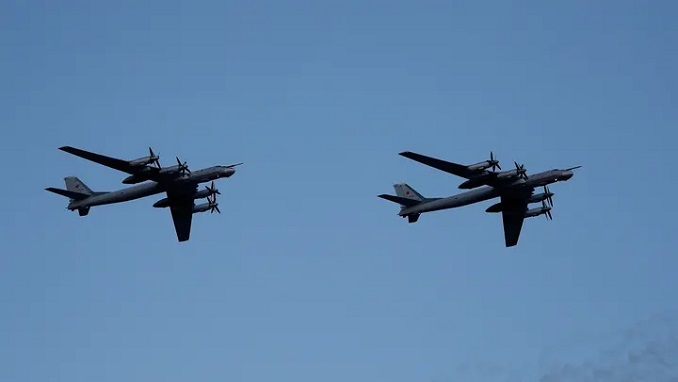
Two Russian maritime patrol aircraft were intercepted flying in international airspace near Alaska by a pair of Air Force F-16 fighter jets, the North American Aerospace Defense Command (NORAD) said Tuesday.
NORAD statement says that the US Air Force F-16 fighter jets detected, tracked, positively identified, and intercepted the two Russian Tu-95 Bear-H bombers that entered and operated within the Alaskan Air Defense Identification Zone (ADIZ).
According to the Federal Aviation Administration, air defense identification zones are airspace areas in which the identification, location, and control of all aircraft are required in the interest of national security.
The statement also adds that NORAD hasn’t seen the recent Russian activity in the North American ADIZ as a threat nor is the activity seen as provocative. It explained that the two Russian bombers remained in international airspace and did not enter American or Canadian sovereign airspace.
NORAD, which routinely monitors foreign aircraft movements and, escorts them from the ADIZ as necessary, detected and tracked last month two Russian maritime patrol aircraft operating within the Alaskan and Canadian air defense identification zones.
Previously this month, as the offices of US Senators Lisa Murkowski and Dan Sullivan announced at the time, two Russian nationals requested asylum in the US after landing at a beach on Alaska’s St. Lawrence Island in the Bering Strait.
The Russian refugees landed at a beach near Gambell, an isolated community on the northwestern part of St. Lawrence Island, 75 km from the closest Russian community across the Strait.
Russian threats against Alaska
Russian State Duma’s Chairman Vyacheslav Volodin warned in July that if the US continued seizing Russian resources, Moscow could demand Alaska back.
Alaska was first colonized by Russia in the late 1700s, but the territory was sold to the US in 1867.

Be the first to comment